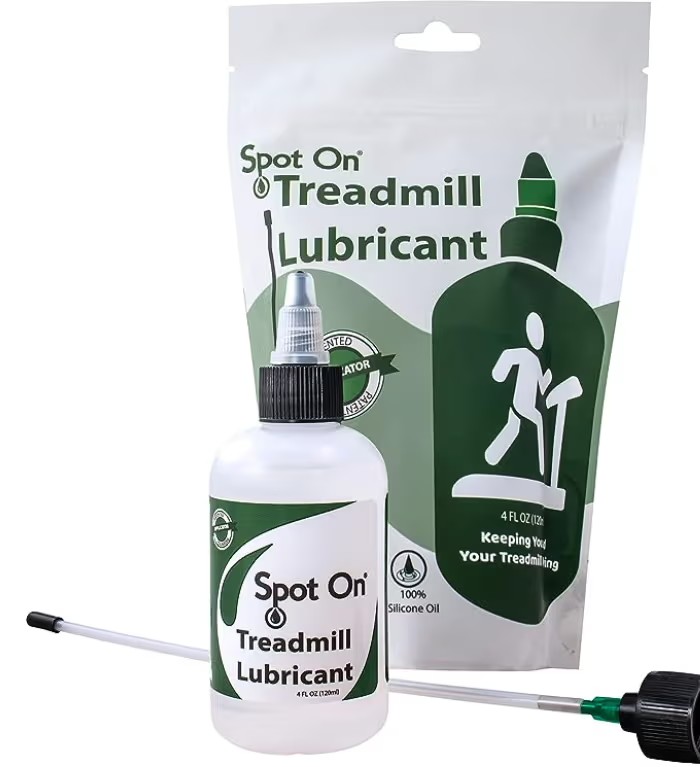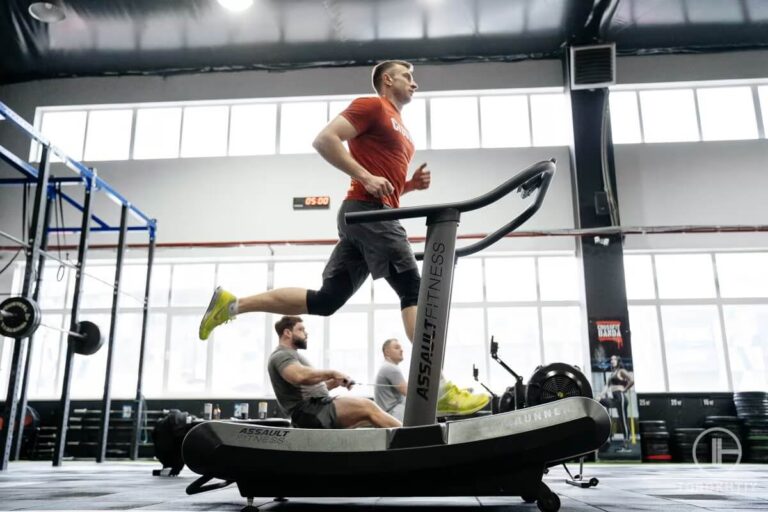Treadmill Maintenance: 6 Expert Tips
If you want to keep your treadmill happy, it’s very important not to skip on treadmill maintenance.
I can already see you worrying about the extra cost. You’ll need to hire a professional every once in a while, to check your treadmill and do what needs to be done, or it will end up breaking on you. And you already paid so much money to get the treadmill in the first place. Why did nobody tell you about maintenance, and can’t you just vacuum the dust off it and be done?
I completely see what you mean. A new treadmill is an investment, and “maintenance” sounds like something pricey and time-consuming. Well, it’s not really like that (luckily).
Yes, you may need to hire a professional here and there, and invest some time in the upkeep, but you can maintain your treadmill yourself. It’s actually fairly simple once you get the hang of it, and I have a whole list of tips and tricks to make the process easier.
Grab your vacuum, Allen wrench, and a cleaning cloth, and let’s see how to maintain a treadmill properly!
Let’s channel our inner mechanic!
How to maintain the treadmill properly? Treadmill maintenance includes cleaning, lubrication, belt adjustments, and safety checks. Cleaning should be performed weekly, belt lubrication bi-monthly to quarterly, belt adjustments quarterly, and safety checks semiannually.
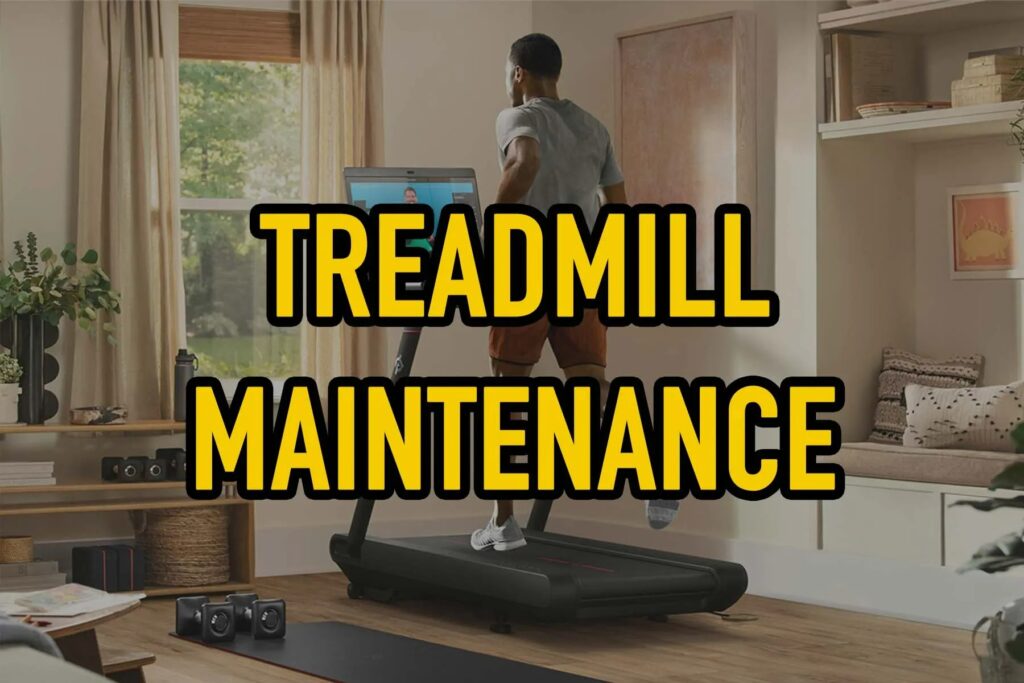
6 Reasons Why You Should Regularly Maintain Your Treadmill
Buying a new treadmill, using it when you want, and perhaps even cleaning it once in a while is great. But what about maintaining the treadmill on a mechanical level? Should you do it? Is it even that important?
Well, that’s up to you – if you want the treadmill to operate at its peak performance level, I suggest you do some regular maintenance. Here are a few things that will be affected if you decide to do or not do maintenance on your treadmill.
1. Longer Lifespan
It’s really simple – if you make sure your treadmill is clean, lubricated, and adjusted, it will last longer.
2. Safety
If you skip on maintenance, your treadmill can start having issues. Dust build-up, belt getting loose or off-center… These can lead to accidents and injury.
3. Best Performance
Using a treadmill regularly can contribute to a fantastic workout and potentially yield fast results. For that, you’ll need it to work properly. If you maintain it regularly, your workout plans will not be ruined by a squeaky or misaligned belt, or if the treadmill suddenly stops working for no apparent reason. By ensuring your treadmill is working optimally, your fitness goals will not be negatively affected by the treadmill.
4. Saves Money
Treadmills are not cheap, so you definitely don’t want to spend more to buy a new treadmill every few months. Timely maintenance will allow you to take care of minor issues on time before they become actual problems that could break your treadmill completely. Prevention is better than cure!
5. Less Noise
The belt being too loose or too tight can make a lot of really weird noises. A squeaky run is not what we want here, so make sure the belt is lubricated and adjusted.
6. Warranty
Check the guidelines and instructions that come with your warranty card. Some manufacturers will void your warranty if your treadmill is not maintained regularly.

Basic Treadmill Maintenance In 7 Steps
You no longer have any doubts about whether you should maintain your treadmill regularly, right? That’s great.
Now, let’s go over how you can do it yourself in seven easy-to-follow steps. I know it can seem a bit intimidating if you’ve never done it, but you’ll see it’s actually a piece of cake.
1. Read The Manual
A lot of people think they don’t need manuals because they know how to do everything themselves. For the love of all that’s good in the world, DO NOT start anything before reading the manual. Treadmills may all look alike, but there are tiny differences between all of them. Take a few moments to read the manual; if you don’t, you risk breaking your treadmill while trying to maintain it.
2. Clean It
Dust build-up is completely normal, both inside and outside. Your vacuum and a cleaning cloth can help with that. Also, it’s good to go over all the handrails and the console with a disinfecting wipe after each use.
3. Tighten The Bolts
Bolts getting loose is another thing that’s completely normal and won’t cause issues if you tighten them on time. Check them every once in a while and tighten them if needed.
4. Lubricate The Belt
This is something that can be seen in the manual, too. The friction between the deck and the belt can cause a lot of heat and wear, so keep the belt lubricated to prevent that from happening.
5. Check The Belt Condition
The belt can sometimes get stretched, or frayed – which can cause accidents. Check the state of it and replace it if necessary. Also, check the belt tension. The belt can be too tight or too loose. Both are a big no-no because they can cause damage.
6. Check The Power Cord
Power cords can get frayed or damaged, too, and that can be extremely dangerous. Check it regularly, and be sure to replace it immediately if you see any damage.
7. Use A Mat
If you put a mat under your treadmill, not only will you protect your floors, but you’ll also minimize the amount of dust that gets in the motor.
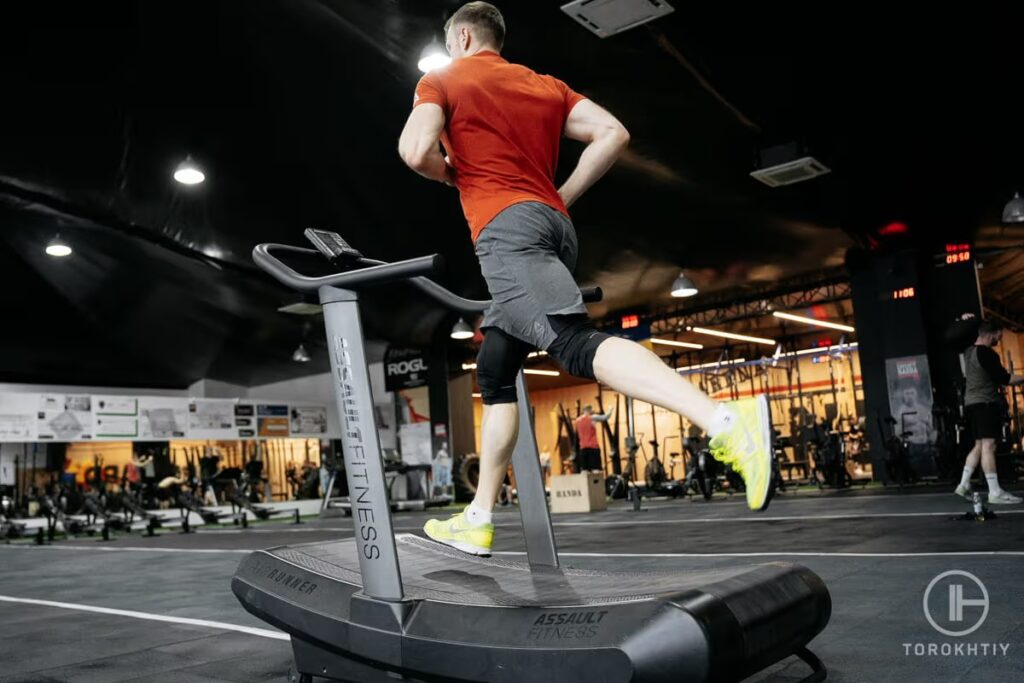
Advanced Treadmill Maintenance: 6 Expert Tips
If you want to be super thorough and go the extra mile with treadmill servicing, that’s great! You may need professional help for some more demanding repairs, but even detailed maintenance is something you can do mostly by yourself.
1. Belt Alignment
The belt getting off-center can cause accidents and damage, so check the alignment at least every three months.
2. Check The Deck
If the deck is worn-out, it can cause slipping and make your workouts less effective. Some decks can be flipped, but if yours is not one of them, you’ll need to replace it once you notice signs of wear.
3. Clean The Motor
Dust build-up can cause a lot of heat, so make sure to clean the motor of any dust. You can use compressed air for this – I find that it works the best.
4. Check The Electronics
Check to see if any wires got damaged or if some connections got loose. Exchange what you need to and fix the rest.
5. Inspect The Rollers
If rollers get worn, it can cause the belt to slip and negatively affect the overall performance of your treadmill. You may need to replace them at some point.
6. Professional Help
Even though you can do the vast majority of maintenance yourself, I would advise getting your treadmill professionally serviced sometimes. Professionals know more than you do, and their service is more in-depth and thorough.
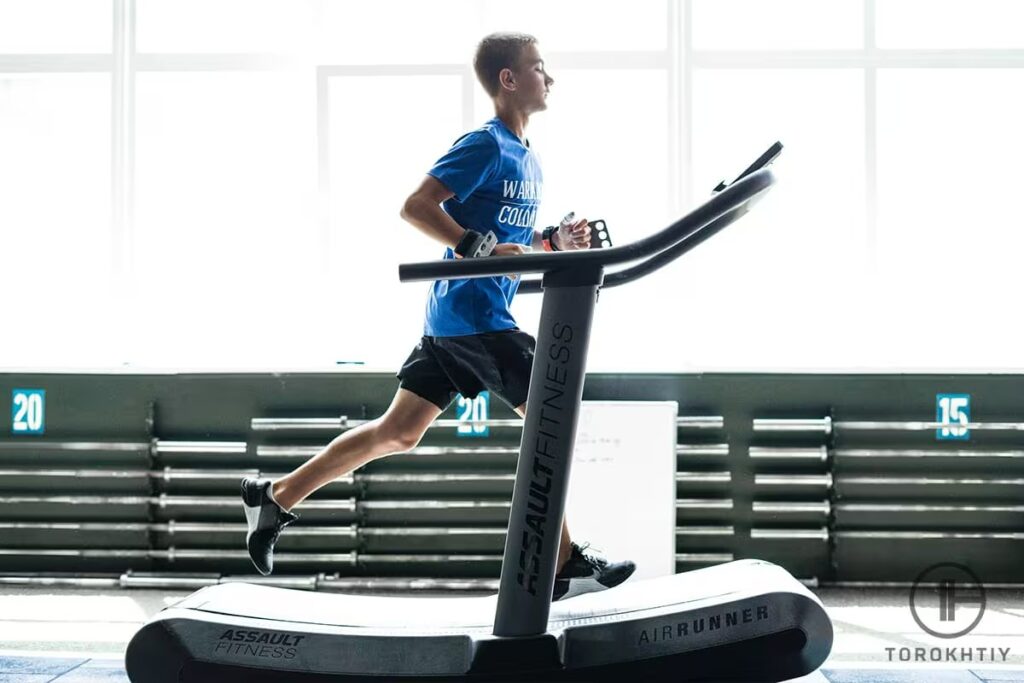
Maintenance Schedule And Log
A good organization helps everyone, and keeping track of the maintenance will make your life a whole lot easier.
Maintenance Schedule Chart
| Procedure | Description | Frequency |
|---|---|---|
| Cleaning | Clean the surface of the whole treadmill | every 1–2 weeks |
| Belt Lubrication | Regularly lubricate the belt | every 2–3 months* |
| Belt Alignment | Check and adjust the belt | every 3 months |
| Belt Tension | Adjust belt tension (not too loose/too tight) | every 3 months |
| Frame Inspection | Check for cracks or loose parts | every 6 months |
| Electrical Connections | Ensure all connections are secure | every 6 months |
The maintenance schedule chart is a general guideline on how often eachprocedure should be performed. But if you hear squeakiness coming from the belt, or you notice the belt is loose, you might want to do the maintenance on an ‘as needed’ basis.
Cleaning should be done weekly/bi-weekly. If the treadmill is a gym-type environment, then you might want to consider increasing that frequency to every other day (it depends on how many people are using the treadmill).
Belt lubrication refers to using a lubricant underneath the belt and on top of the running deck and is generally recommended (depending on the product manufacturer) every 2-3 months, approximately every 150 miles, or approx. every 25 hours of running (whichever comes first). If the treadmill is in your home gym and you are the sole user, you’ll likely need to do this maintenance procedure every 3 months.
But if the treadmill is used in a gym, where it’s being used much more frequently, you will likely have to lubricate it monthly or as soon as you achieve any of the other two criteria. If you’re unsure or are missing the treadmill service manual, then doing belt lubrication every 3 months should be enough to ensure product lifetime.
Belt alignment and belt tension are supposed to be done quarterly (every 3 months). But if you notice the belt being misaligned or it’s a bit loose, unplug the treadmill, and do the maintenance procedure straight away to prevent damage to the machine. Also, it wouldn’t be safe to run on an unprepared surface.

Frame inspection can be done on a regular basis (again, depending on the frequency of use), but it should be performed semiannually at the latest. The same goes for electrical connections. While checking the wiring, ensure the treadmill is turned off for added safety.
Maintenance Log Chart
| Date | Procedure | Inspection | Repairs Completed |
|---|---|---|---|
| Record the date of each maintenance | Write down what the procedure was (lubrication, cleaning, etc.) | Note down any issues that you noticed during maintenance | If anything was repaired, document it |
When Filling out the maintenance log chart, you want to record the date of each maintenance. This way, you leave a note for yourself and other people who may be doing maintenance on the same machine.
The same goes for the ‘Procedure’ column. Simply write which procedure you’re performing based on the maintenance schedule chart above. In the ‘Inspection’ column, you want to record notes based on your observation during maintenance (e.g., if the belt is misaligned during the routine belt alignment maintenance, note this in the maintenance log chart).
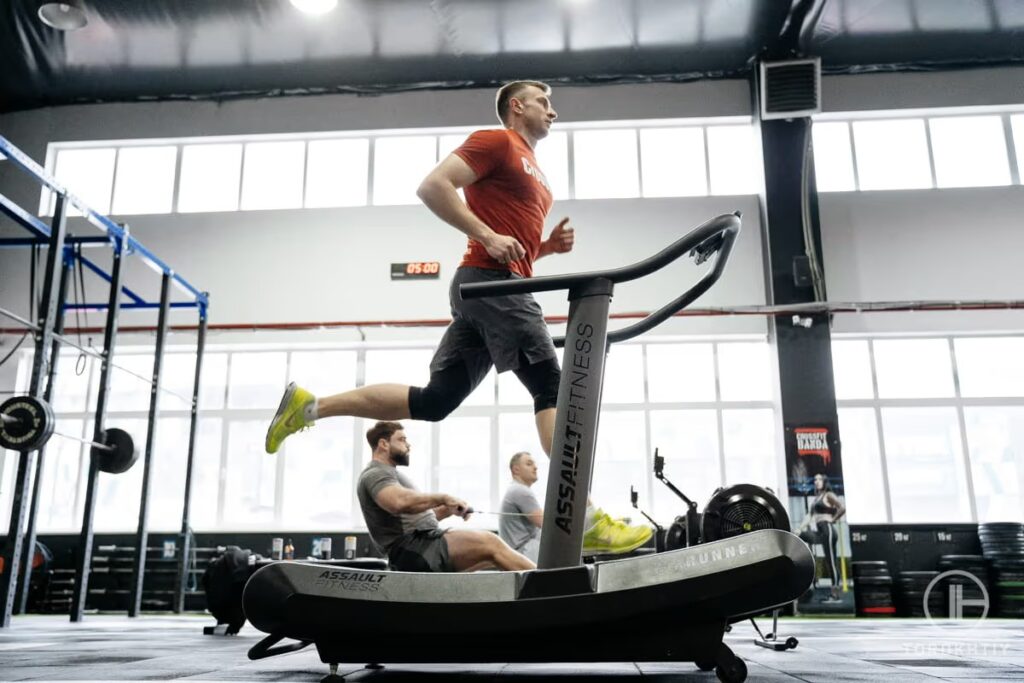
If, during the inspection, a fault is detected and requires repair, record the repair in the ‘Repairs Completed’ section. If no repairs are required, then write “None required” for future reference.
Below is an example of how to fill the maintenance log chart:
| # | Date | Task | Inspection | Repairs Completed |
|---|---|---|---|---|
| 1 | Jul 10, 2023 | Belt Lubrication | The belt is running smoothly | None required |
| 2 | Aug 28, 2023 | Belt Alignment | The belt was slightly misaligned | Aligned the belt |
| 3 | Aug 28, 2023 | Belt Tension | The belt was a bit loose | Increased belt tension |
| 4 | Aug 14, 2023 | Belt Lubrication | The belt is not running smoothly | Lubricated the belt |
Seems pretty simple, right? So simple you may not even think you need it, but trust me, everyone needs a schedule and a log. It is easy to get lost with so many different procedures with different repair frequency intervals (especially if you’re maintaining multiple pieces of equipment).
If you’re maintaining your treadmill by yourself, you probably don’t do everything on the same day because that would take a long time. And don’t try to keep everything in mind – it’s better to document all the things done. Otherwise, that can lead to problems.
The schedule is self-explanatory, and I find that it’s the most effective to set one day for each procedure. That excludes cleaning, though – it’s best to use a wipe to clean your treadmill after each use.
As far as the log goes, this is something you should take seriously, so you know when maintenance is due.
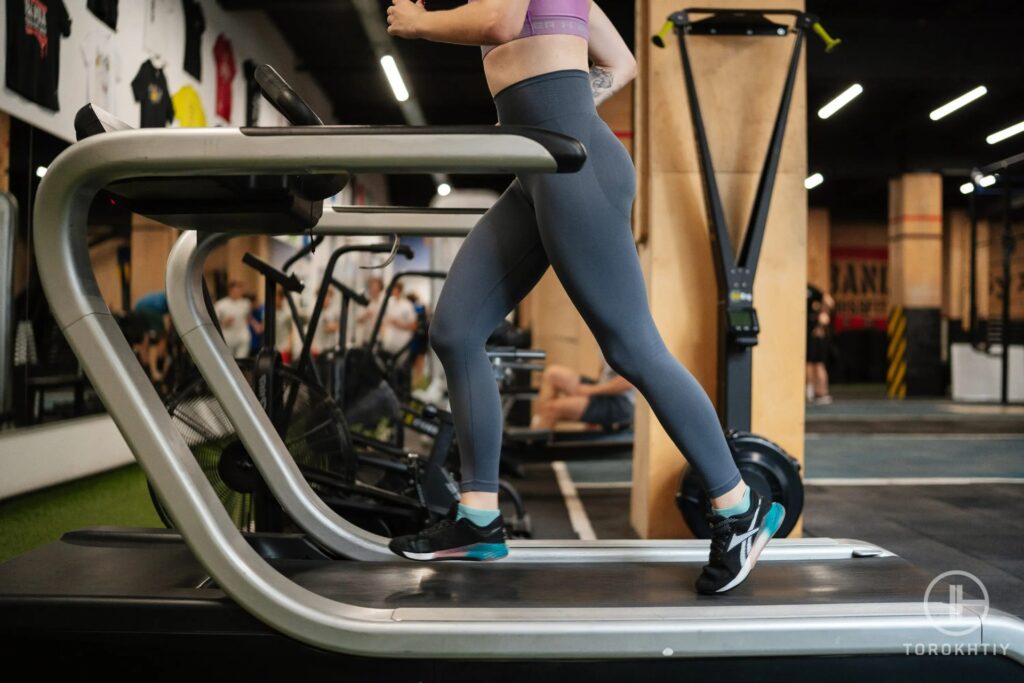
First – the date. That’s crucial to do. Aside from the date, you should also note down the specific procedure that was done and anything you noticed while doing it. Weird noises, loose screws, basically anything that seems out of the ordinary – write it down.
Repairs and adjustments go in the log, too. Document anything that you did. In case you need to call in a professional, this information will mean a lot.
Lastly, if you get your treadmill professionally serviced, write the date down. You can even make a note of all that was done to get it serviced. Next time you need professional help, it will simplify a task.
Treadmill Lubricant We Recommend – Spot On 100% Silicone Treadmill Belt Lubricant
You now know how important it is to keep the belt lubricated. The type of lubricant is just as important, and it can mean a difference between the belt overheating due to friction or not.
If you don’t have a favorite lubricant and don’t really know what works best, I have an excellent one to recommend.
This is kind of hard to squeeze out, but that’s also a good thing because you don’t have to worry you’ll squeeze out too much. It contains 4 applications worth of lubricant, which is enough to last you for one whole year.
It’s completely scent-free and non-toxic, so the whole experience is pleasant (or at least as pleasant as treadmill lubrication can be) and safe.
It does everything you would expect from a lubricant, which basically means it keeps the belt safe from friction, and your treadmill doesn’t make crazy loud noises.
Thanks to an applicator, it’s super easy to use. Even though your treadmill may need some professional care once in a while, lubrication is definitely something you can do as well as a professional with this one.
Positives:
Could be better:
FAQ
How Often Does A Treadmill Need Servicing?
It depends on how intensively you use it, but a treadmill typically needs a service every 6 to 12 months. You can also check the user manual to see what the manufacturer recommends.
Do You Have To Maintain A Treadmill?
I cannot overstate this – YES! If you do not maintain your treadmill, not only will it break down, but it can cause accidents and injuries. Maintaining it regularly prolongs its lifespan, makes sure your workouts are effective and also keeps any accidents and injuries at bay. A treadmill can give you an amazing workout, but only if you keep it in shape.
Conclusion
You can put away your Allen wrench, lubricant, and cleaning clothes because we’re done! Now you know everything there is to know about maintaining your treadmill – from why it needs servicing to how to service a treadmill.
What are your experiences with treadmill care? Do you do it yourself, or have a professional take care of it? Do you have any helpful tips to share?
Leave anything you can think of (questions, tips, tricks, suggestions, ideas) in the comments, and let’s help each other out!
Also read:
- How to Clean Treadmill Belt
- How to Adjust Treadmill Belt
- How Many Calories Do You Burn on a Treadmill
- Stairmaster vs Treadmill
- Treadmill vs Treadclimber
- Best Cushioned Treadmill
- Exercise Bike vs Treadmill
- Best Folding Treadmill
- Best Walking Shoes for Treadmill
References:
- Shahrzad Torabi, Farah Zahra, “Disinfectants”, NCBI (accessed August 27, 2023)
- Tia Ghose, Ailsa Harvey, “What is friction?”, LiveScience, https://www.livescience.com/37161-what-is-friction.html
- “Heat From Friction”, School Of Physics: https://tinyurl.com/kn7ch55y
- “The Danger of Damage Cords”, Safety Beacon https://www1.udel.edu/ehs/newsletter/2015/Safety Beacon 15-1.pdf
- Maddy Biddulph, “Treadmill benefits”, LiveScience, https://www.livescience.com/treadmill-benefits
Why Trust Us?
With over 20 years in Olympic Weightlifting, our team does its best to provide the audience with ultimate support and meet the needs and requirements of advanced athletes and professional lifters, as well as people who strive to open new opportunities and develop their physical capabilities with us.
By trusting the recommendations of our certified experts in coaching, nutrition, dietology, and sports training programming, as well as scientific consultants, and physiotherapists, we provide you with thorough, well-considered, and scientifically proven content. All the information given in the articles concerning workout programming, separate exercises, and athletic performance, in general, is based on verified data. We ensure that you can rely on our professionals’ pieces of advice and recommendations that can be treated as personalized ones which will benefit you and fully meet your needs.
The product testing process is described in more detail here
Author: Ihor Shymechko
Pro Olympic Weightlifter, Coach
Best Results: Snatch – 208 kg,
C&J – 240 kg
Ihor has been a professional weightlifter since 1996, boasting over two decades of competition experience. His notable achievements include clinching the European Championship in 2009 and securing a silver medal in the 105kg division at the Senior World Championships in 2011. Ihor represented his country in the 2008, 2012, and 2016 Summer Olympics. After retiring from competitive weightlifting, he transitioned to coaching, leveraging his vast experience to guide athletes who now compete on both national and international stages.

